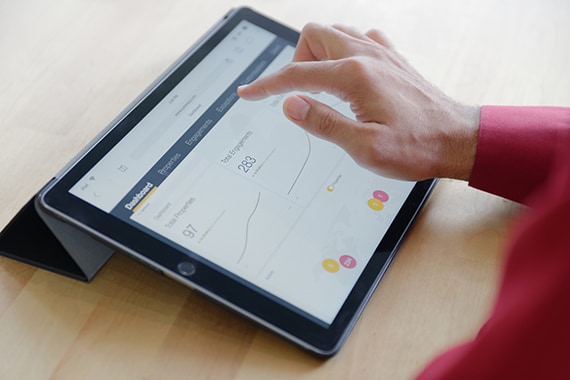E-learning is a valuable digital tool for self-paced learning delivered via digital devices. E-learnings can be accessed by multiple simultaneous users from any part of the world, at any-time.
E-learning training requires 40-60% less employee time than learning in a traditional classroom setting. It is an effective training method that does not take too much of your employees’ time. What’s more, it allows your employees to both manage their job responsibilities and take charge of their own upskilling.
PwC’s Academy can develop effective e-learning training courses to meet the training needs of your employees.
Unlock the benefits of e-learning: find out whether you need an e-learning solution!
- E-learnings
- Banking
- Shared Service Centres
- Insurance
E-learnings
E-learnings are key when you need to upskill a large group of people at the same time over a long period. They are a great solution when you need to either introduce or resolve a compliance topic or challenge, organize a technical training, introduce a new process or procedure at work, present new legislation topics, organize an employee induction or onboarding training, and in similar situations. Check out this short video and explore the many ways in which e-learning has been used by organisations across different industries!
What are the benefits of e-learning for my organization and my employees?
- Cost efficient
- Time efficient
- Flexible
- Consistent
- Measurable results and reporting
- Easy to update
Cost efficient
After initial e-learning development costs, an e-learning training program can be delivered to employees on a large scale with no additional cost.
How does an e-learning course keep people engaged?
You may be familiar with the traditional 70:20:10 model and recall that individuals obtain 70% of their knowledge from job-related experiences and challenging assignments. Humans are biologically predisposed to develop through experience. Kolb’s theory of experiential learning states that adults learn best when they are engaged in the learning experience instead of memorising facts. By creating an impactful digital experience, we can trigger much of the same learning effects of real experience, engaging people more effectively and increasing learning potential. We use interactive tools to include the learner in the learning process, we create case studies and examples that correlate with the learner’s environment. This approach ensures that the content is better understood and memorised.
What technology and tools do I need for e-learning in my organization?
We develop e-learning programs in a standard e-learning format (SCORM) that can be uploaded to any LMS (Learning Management System) platform. In case you do not have your own platform, you can use PwC’s platform to host your e-learnings. The platform can be designed in accordance with your brand so that your learners have a feeling that they are accessing an internal tool.
What does an e-learning look like?
IFRS 15

IFRS e-learning

Insurance e-learning

Business and soft skills - e-learning

Compliance e-learning

Banking e-learning

Tax e-learning

ESG
European Sustainability Reporting Standards (ESRS)
Global Reporting Initiative (GRI)


